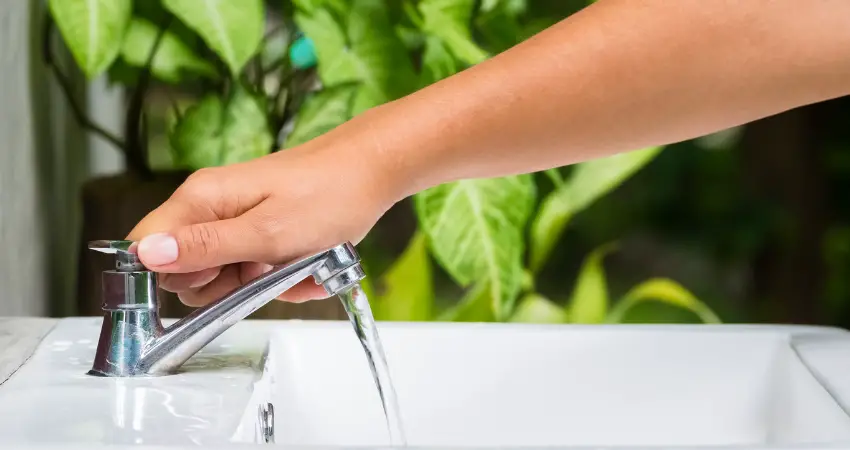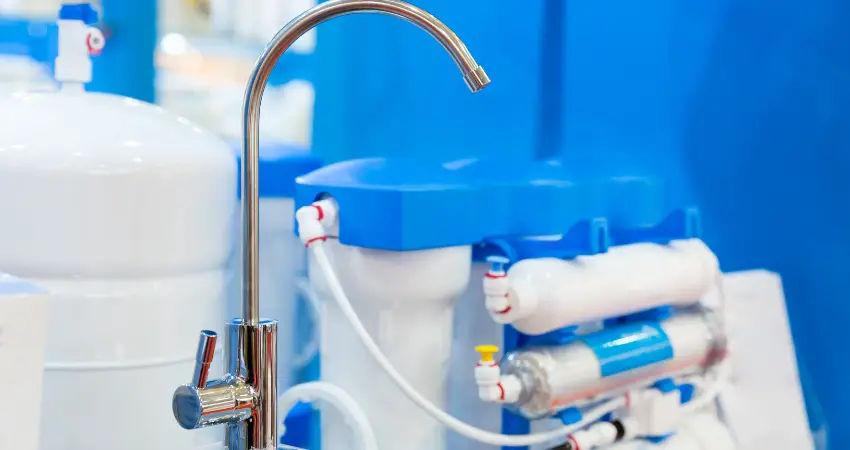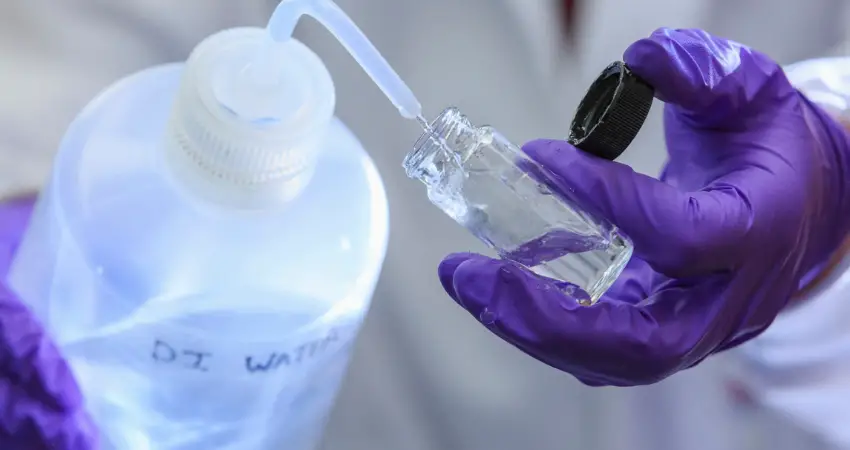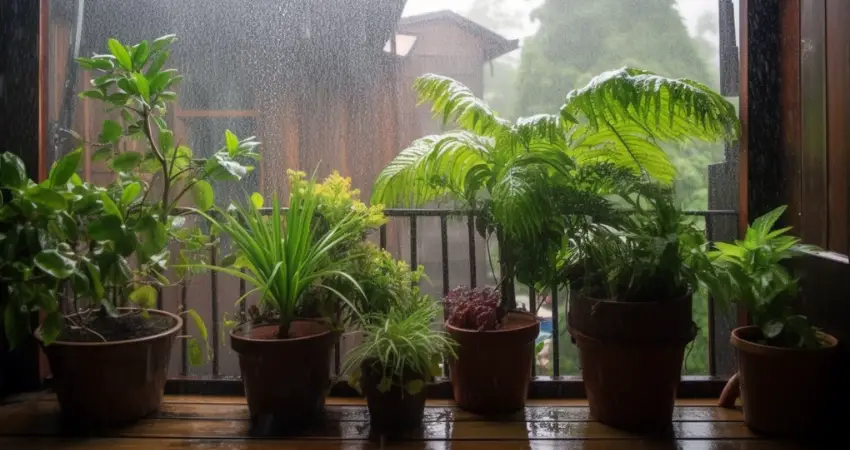Are you a plant parent who loves nurturing your indoor greenery? Or perhaps you’re just starting to explore the world of houseplants and wondering how to care for them properly? One essential aspect of plant care is providing your leafy friends with the right kind of water. But with several water sources available, it can be challenging to know which one is best for your plants. That’s where we come in!
In this article, we’ll dive deep into the world of tap, filtered, distilled, and rainwater, comparing each source’s benefits and drawbacks to help you make an informed decision. You’ll be armed with valuable knowledge to give your indoor plants the best care possible, ensuring they grow strong and healthy.
So, let’s get started on this fascinating journey to discover the ideal water source for your indoor oasis!
Water Sources For Indoor Plants: Quick Summary
| Water Source | Pros | Cons | Tips |
|---|---|---|---|
| Tap Water | Accessible, cost-effective, mineral content | Chlorine, fluoride, hard water and salts | Aerate or age water, test regularly |
| Filtered | Reduced impurities, improved taste, healthier plants | Cost, maintenance, incomplete removal of contaminants | Choose the right filter, maintain filters, test regularly |
| Distilled | Free of impurities, consistency, ideal for sensitive plants | Cost, environmental impact, lack of minerals | Supplement with nutrients, mix with other water sources, test regularly |
| Rainwater | Free, beneficial nutrients, soft water | Collection challenges, pollution, inconsistent availability | Proper collection and storage, filtration, test regularly |
This table provides a summary of the pros, cons, and tips for using tap water, filtered water, distilled water, and rainwater for your indoor plants. Refer to this table as a quick guide to help you make an informed decision on which water source is best suited for your plants’ needs.
Tap Water: Readily Available, But Watch Out for Chemicals

Tap water is the most accessible and cost-effective water source for indoor plants. It typically contains minerals such as calcium, magnesium, and potassium that are essential for plant growth.
Pros of Tap Water
- Accessibility: You can easily obtain tap water from your faucet.
- Cost-effectiveness: It’s generally cheaper than other water sources.
- Mineral content: Tap water naturally contains minerals that can benefit your plants.
Cons of Tap Water
- Chlorine and chloramine content: These chemicals are added to tap water to kill harmful bacteria but can be detrimental to plants.
- Fluoride content: Fluoride is added to prevent tooth decay in humans but can be toxic to plants, especially in large quantities.
- Hard water and salts: Tap water can contain high levels of calcium and magnesium, leading to the buildup of salts that can harm your plants.
To mitigate these issues, you can aerate your tap water by leaving it uncovered for 24 hours or age it by storing it for a few days. This allows chlorine and other volatile compounds to evaporate. Additionally, you can test your tap water to determine its hardness, pH, and chemical content.
Filtered Water: Cleaner Option for Healthier Plants

Filtered water is tap water that has undergone a purification process to remove impurities such as chemicals, sediment, and heavy metals.
Types of Filters
- Activated carbon: This filter type uses activated carbon to adsorb impurities.
- Reverse osmosis: This process involves forcing water through a semipermeable membrane to remove contaminants.
- Ceramic: Ceramic filters have tiny pores that catch impurities as water passes through.
- Ion exchange: These filters use resin beads to exchange ions, removing contaminants in the process.
Pros of Filtered Water
- Reduced impurities: Filtering tap water can remove harmful chemicals and impurities.
- Improved taste and odor: Filtered water is less likely to have a strong chemical taste or smell.
- Healthier plants: Removing contaminants can lead to healthier, more robust plants.
Cons of Filtered Water
- Cost: Filter systems can be expensive to purchase and maintain.
- Maintenance: Filters require regular replacement to maintain effectiveness.
- Incomplete removal of contaminants: Some filters may not remove all impurities, depending on the type and quality of the filter.
Choose the right filter based on your water quality and the specific needs of your plants. Test your filtered water regularly to ensure it meets your plants’ requirements.
Distilled Water: Pure, But Lacking in Nutrients

Distilled water is water that has been boiled into steam and then condensed back into a liquid, removing most impurities in the process. It is very pure, making it ideal for sensitive plants.
Pros of Distilled Water
- Free of impurities: Distilled water is almost entirely free of contaminants.
- Consistency: The distillation process results in consistent water quality.
- Ideal for sensitive plants: Some plants, like carnivorous plants or orchids, thrive in the purity of distilled water.
Cons of Distilled Water
- Cost: Distilled water can be expensive to purchase or produce.
- Environmental impact: The distillation process consumes a significant amount of energy.
- Lack of minerals: Distilled water lacks essential minerals that plants require for growth.
To use distilled water effectively, consider supplementing it with nutrients to provide your plants with the necessary minerals. Alternatively, you can mix distilled water with other water sources to strike a balance between purity and mineral content. As always, test your water to ensure it meets your plants’ needs.
Rainwater: Natural and Nutrient-Rich, But Inconsistent

Rainwater is a natural water source that can provide beneficial nutrients for your plants. However, it comes with its own set of challenges.
Pros of Rainwater
- Free and renewable source: Rainwater is a naturally occurring and renewable resource.
- Beneficial nutrients: Rainwater contains nutrients like nitrogen, which can promote plant growth.
- Soft water: Rainwater is naturally soft, making it less likely to cause salt buildup in the soil.
Cons of Rainwater
- Collection and storage challenges: Collecting and storing rainwater requires a dedicated system, which can be cumbersome or difficult to set up.
- Pollution and contaminants: Rainwater can be contaminated by air pollution, pesticides, and other substances.
- Inconsistent availability: Depending on your location, rainwater may not be available year-round.
To use rainwater effectively, ensure proper collection and storage to minimize contamination. You may also want to filter rainwater to remove pollutants before using it on your plants. As with any water source, test your rainwater to ensure it is suitable for your plants.
Factors to Consider When Choosing a Water Source
When deciding which water source is best for your indoor plants, consider the following factors:
- Plant species and their water requirements: Different plants have different water needs and sensitivities to chemicals and minerals.
- Water quality and mineral content: The quality of your water source, including its pH, hardness, and chemical content, can impact your plants’ health.
- Cost and accessibility: Some water sources may be more expensive or less convenient to obtain than others.
- Environmental impact: Consider the energy consumption and sustainability of your chosen water source.
Frequently Asked Questions (FAQs)
Why is the choice of water source important for indoor plants?
What are the advantages of using aquarium water for indoor plants?
How do I determine the best water source for my indoor plants?
Can I use a combination of water sources for my indoor plants?
Bottom Line
Ultimately, the best water source for your indoor plants will depend on their specific needs and your local water quality. By understanding the advantages and disadvantages of tap, filtered, distilled, and rainwater, you can make an informed decision to optimize your plants’ health. Don’t hesitate to experiment and make adjustments to find the ideal water source for your plants. Remember to regularly test your water to ensure it meets your plants’ needs, and happy gardening!
